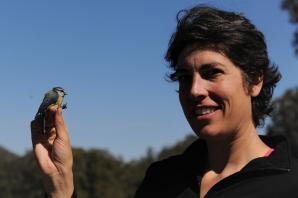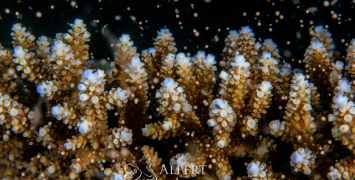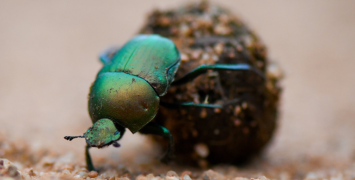Blue tits provide climate change clues
The liveliest of our feathered garden visitors, the little acrobatic blue tit, and her close cousin the great tit, can tell us a lot about how birds adapt to climate change, urbanisation and other changes in their environment. To mark this year’s International Day for Biological Diversity, we bring you the story of ERC grantee Anne Charmantier who studies how these songbirds are adapting to their fast-changing habitat and what that could mean for their long-term survival.

Although climate change and urbanisation are widely assumed to lead species to change and evolve, an ERC-funded project measuring the adaptation of tits to their environment has gathered the first evidence confirming this phenomenon.
With the support of an ERC Starting Grant, Anne Charmantier, an evolutionary ecologist at the French National Centre for Scientific Research (CNRS), is analysing 45-year-long data sets from the monitoring of blue tits (Cyanistes caeruleus) and great tits (Parus major) in sites across the Mediterranean in order to understand the impact of environmental changes on their evolutionary adaptation.
Her research shows that while these birds can adapt to their changing environment to a certain extent, these adaptations may not be fast enough to ensure their long-term survival.
Watching this video you are accepting Youtube cookies policy
Smaller and lighter city tits
The SHE project first set out to measure natural selection – one of the forces that drives evolution – across the study sites and across time. Charmantier wanted to know whether certain behaviours and traits make some tits more successful in a certain environment and therefore more likely to pass on the genes associated with those traits to the next generation.
With climate change, tits were found to breed up to two weeks earlier in the spring, signalling that they can adapt to the new climate conditions to some extent. When it comes to urban areas, the data also revealed that adaptation to that environment results in smaller and lighter tits. However, the team also discovered that entire chick populations starved during the 2019 European heatwave due to the fact that their parents were unable to forage for insects in 45 degrees – creating concerns about their adaptation to extreme climatic events. Moreover, the analysis of long-term data revealed that heat waves have become more frequent in this Mediterranean area, and that they increase the force of selection acting on breeding blue tits.
Environmental factors
While studying how flexible tits are to synchronise their life events (i.e. breeding periods and care for their chicks) to the life cycle of the insects that they prey on in order to adapt to climate change, the team realized the importance of taking into account ecological mechanisms.
Researchers measured the impact that environmental changes had had on the genetic make-up of blue tit populations. Genetic material associated with variations in traits was analysed in order to get a better understanding of how past selection had shaped these traits.
This gave the team a new insight into the local adaptation of tit populations – specifically into the heritable traits altered by environmental conditions which involve changes in gene expression without alterations in the DNA sequence itself (epigenomic). It’s a finding that opens an exciting door to looking more closely at epigenomic bases in adaptation.
Time is of the essence
Tits are a good model species for ecology and, as the study shows, they can adapt to certain changes in their environment if they adapt their traits and behavior to match the new environmental demands.
However, it is not only about understanding how tits adapt but also about how quickly they can do so in order to fully understand biodiversity loss and its impact on ecosystems. Charmantier is less positive about bird adaptation to drastic climatic events like heatwaves and warns that many bird species including blue and great tits could be at risk of extinction.
‘Extreme climatic events are definitely creating a new selection pressure,’ Charmantier says. ‘However, the evolutionary process takes time and might never be able to catch up with the fast pace of climate change.’
She also highlights the importance of understanding these adaptive responses for use in protecting our planet’s biodiversity. ‘If we understand these adaptations, we can develop conservation strategies specifically tailored to species’ ecologies,’ said Charmantier. ‘This could help us build a more sustainable future for them – and us as well.’
Bio
Anne Charmantier is an evolutionary ecologist at the French National Centre for Scientific Research (CNRS) and is based in the Center in Evolutionary and Functional Ecology (CEFE) in Montpellier. She studies the ecological and evolutionary mechanisms underlying trait variations in wild bird populations, presently blue tits (Cyanistes caeruleus) and great tits (Parus major), with a special focus on the role of environmental degradation.






